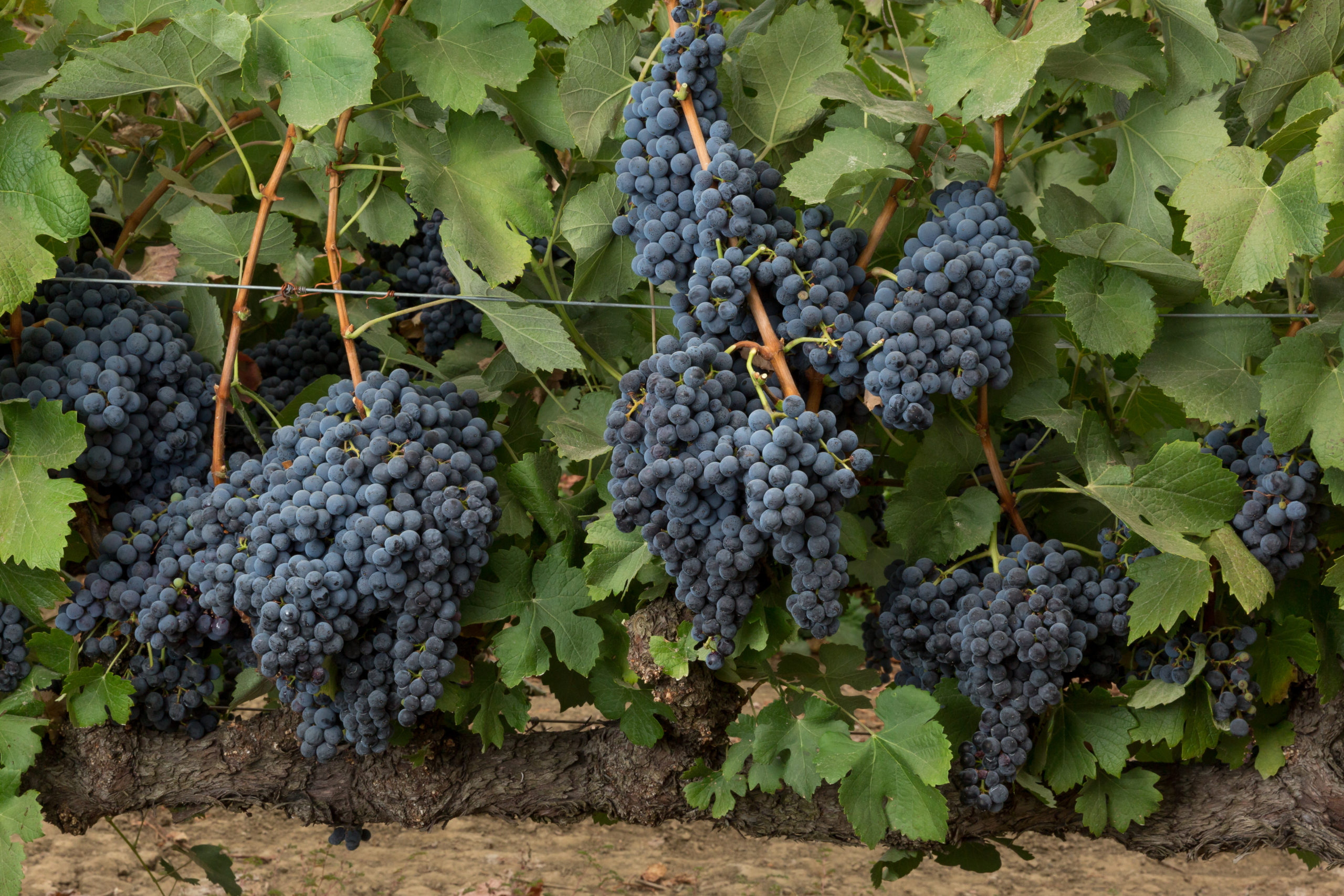No, it’s not a premier bottling of Pinot Noir from some esoteric region. Nor is it a large black piano.
It’s actually a relatively new (using the term “new” here very, very loosely) black-skinned grape variety from France, born from crossing Petit Bouschet with Aramon in 1855 that sadly today has been all but abandoned due to the grape’s susceptibility to disease and cold damage.
Now, those traits are really nothing to stop a grape from becoming the next big sensation globally (see: Pinot Noir), but the trajectory isn’t in favor of Grand Noir taking over the wine world bandwidth anytime soon.
Currently, the majority of plantings are in Spain where it can be found as Gran Nero and Portugal as Baga or Tinta Fina. There are plantings under the Grand Noir name in Napa and Sonoma, but they’re most likely for research or experimental observational purposes as we’ve yet to encounter a Grand Noir bottling from the area.
Hell, on our eternal wine treasure hunt we come across all sorts of odds and ends from all over the globe, and as many of you who have been with us for a while know, you have reaped the benefits time and time again from these finds. For those just joining us, recent memory brings to the top of the mind: Lot 589 Sonoma Arneis, Lot 634 St. Helena Lagrein, Lot 726 Napa Charbono, and Lots 739 & 740 Clarksburg Nebbiolo and Aglianico (respectively), just to name a few without fully tapping our history books here. We’re never ones to shy away from something unknown or off the beaten path if it’s an exceptional expression of a grape from the source region. But a Grand Noir worth speaking about has evaded us (and so has Counoise, but more on that another time).
It’s no secret we’ve been knocking on doors throughout Italy of late, and that we’ve gotten some gems from the effort in the last couple of years or more, but nothing prepared us for this.
Grand Noir. In Italy. Oh, and it’s good. Like, really, really good.
Do yourself a favor, google: Grand Noir Grape. The first 4-5 results will be a plethora of information speaking to the grape’s parentage, its difficulty to grow due to disease and frost damage, its irrelevance, Spain and Portugal trying to keep it alive to no avail, the lack of any varietal character (which we’d heavily argue against), honestly (said sadly), the list of reasons to cut bait goes on and on *shakes head*.
Yet, hold on, we found plantings, in Italy no less, that are antithetical to all the excuses aforementioned to cut bait with this Grand Noir business. As always, we cannot reveal our source, but we can tell you that the winemaker was head over heels to find out a ragtag group of American wine nerds were very, very interested to try it outright, and even further interested in taking what was able to be given.
In our own personal travels through the years, we’ve come across various forms of Grand Noir, all of which, in all candor, did fall into the trap of “uninteresting” wine – the name and rarity grabbed our attention, but the juice just didn’t do it for us. For reference, we probably release half a dozen Chardonnays on some years, but we taste hundreds and pass, so it’s not uncommon at all to find oddities throughout the years that would be cool to release, but don’t pass muster with our tasting panel, and thus go down the drain.
All this in mind, it’s no surprise we’re gushing about this Italian Grand Noir. Also of note, many grapes originate in a country but fine more acclaim elsewhere, and in some cases completely abandon ship and head for new, greener pastures. Sauvignon Blanc took New Zealand (and the world) by storm, Malbec now by-and-large resides in Argentina, Pinot Gris (Grigio) is probably Italy’s most well known wine. All of these started in France and migrated out for various reasons. And considering the expression and terroir profile on the Grand Noir we found in Italy, we’d place a strong bet that some lucky winemaker found the perfect combination of microclimate, soil composition, vine tending, and exposure to bring a historically difficult grape to bear great gifts (complete with an essence of the land and a varietal character).
So, keep an eye on our upcoming new release emails for the announcement of our inaugural Grand Noir offering, something you may never see again in the wild (well, hopefully we’re very wrong in this).
Cheers!

